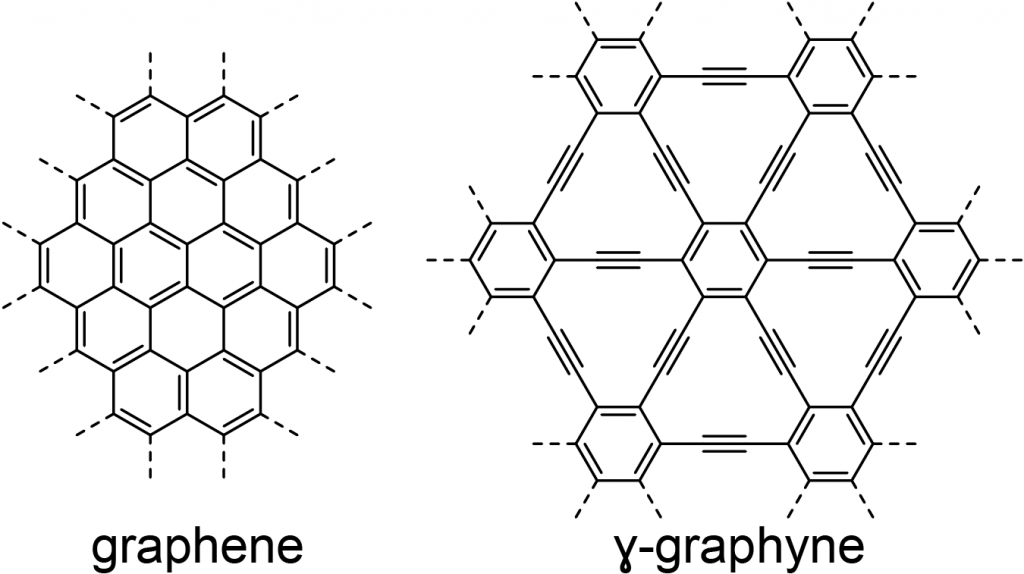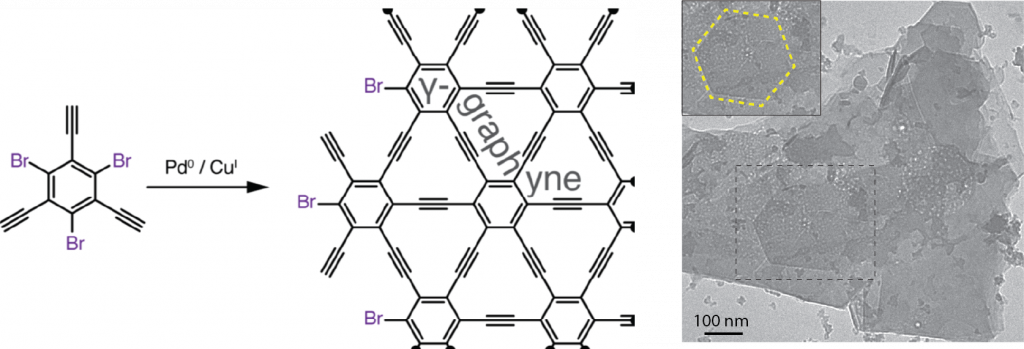The unique ability of carbon to bond with itself underlies the structural and functional complexity of organic matter. This complexity extends to elemental carbon. More than 500 carbon allotropes have been theoretically predicted to date. Graphitic carbons based on hexagonal lattices of sp2 hybridized atoms, including fullerenes, nanotubes, and graphene, are now accessible at scale. These materials proved revolutionary for basic physics and materials science and found practical applications in post-silicon electronics, high-capacity batteries, organic solar cells, and extreme-strength composites.

In contrast with graphitic carbons, the allotropes containing sp1 hybridized linear carbon arrangements remain synthetically elusive and, for the most part, theoretical. One such hypothetical material is ɣ-graphyne, a 2D carbon lattice formally constructed by uniform expansion of graphene with two-carbon acetylenic units. ɣ-Graphyne is predicted to be a stable semiconductor with a moderate band gap, ultrafast charge carrier mobility, high heat conductance, and exceptional strength. Because of these properties ɣ-graphyne has the potential to form the basis for the next generation of carbon-based electronics, photonics, and solar cells. Graphyne-based devices can be ultra-thin, flexible, and operate at speeds unattainable by silicon chips. We investigate synthetic routes to ɣ-graphyne through solution-phase two-dimensional polymerizations, and experimentally explore the properties of this new allotrope of carbon.

This research can revolutionize carbon nanotechnology, expanding its structural toolbox beyond primarily graphitic structures. Understanding the chemistry of sp1 carbon allotropes can lead to entirely new classes of structures with unique electronic and optical properties, including graphyne ribbons, nanotubes, quantum dots, and heterostructures with other 2D materials.